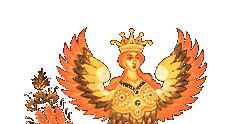Russian popular prints, louboks, belong to the separate sphere of fine fold art which, rather peculiarly, accumulated the spiritual life of the people and showed their cognition of the world and artistic aspirations. The appearance and evolution of the genre cover the comparatively late period of the history of folk art-mid-18th and 19th centuries - when many other forms of fine folk arts have gone a certain evolution. From the historical and culturological aspect, Russian louboks present a variant of the folk primitives and form one group with such art phenomena as loubok paintings and engravings from one side and book miniatures, distaff and chest paintings from the other. Loubok prints are poorly studied and until recently this trend of 18th-19th century art was very rarely mentioned in scientific literature. Louboks did not interest art connoisseurs and are thus not often seen in library or museum collections. But the Historical Museum in Moscow boasts a considerable collection of this artistic genre, which can give a comprehensive idea of its peculiarities and demonstrate the main stages of its evolution.
The loubok technique was rather peculiar. Watery tempera was put on a slight pencil design, masters diluted paints in egg emulsion or stickly vegetable substances. Tempera is an advantageous material and strongly diluted in solvent it with translucent layers is produced. As distinct from the mass loubok engravings, popular prints were done by the masters completely by hand, which imparted to louboks an improvised and naive uniqueness.
The authors of the wall sheets were, as a rule, closely linked with folk mastercraftsmen, among them icon painters, miniaturists and copyist who preserved and developed early Russian traditions. This circle, primarily, formed the future masters of the popular prints.
Loubok originated and circulated more often at the old-believers monasteries, northern villages and settlements of the Moscow area, guarding old Russian traditions of icon painting and writing manuscripts. A number of centres with flourishing, in the 18th and more so in the 19th century, art of popular prints can be singled out. These are the Vygo-Leksinsky Monastery of old-believers, with the adjoining skits (Karelia), the region of the Upper Toima on the Northern Dvina, Kadnikovsky and Totemsky regions in the Vologda Area, Velikopozhenskoye Commune on River Ust-Tsilma on the Pechora and Guslitsa in the Orekhoco-Zuyevsky Region near Moscow.
Every one of these local centuries gave birth to pictures which, in their stylistic peculiarities and artistic means of expression followed the general trend of the development of folk art, all their peculiar features notwithstanding. The masters of different schools were never isolated from others and kept in touch with their colleagues from the neighboring and even remote centres, assimilated or rejected some of their achievements, borrowing themes one from the other, striving simultaneously for original subjects and means of treating them.
Louboks constituted a noteworthy page in the history of folk art. It took high spirituality and artistry from icon painting, an organic blend of the textual and artistic aspects, initials' form and decor, delicate drawing and coloring of figures and things - from manuscript miniatures. But, essentially, loubok prints had the same system of expression as loubok pictures.
Compositions in both types were two-dimensional with main characters emphasized only by means of larger dimensions.
Figures were placed frontally and the background scrupulously decorated, the whole thing producing an impression of a lace ornaments. Prints thus fully obeyed the artistic principles of primitive art and can be included into the primitivistic aesthetic system.
The themes of louboks varied from sheets of historical subjects, for example, featuring the Battle of Kulikovo, 1380, or portraits of the leaders of schism, landscapes with old-believers' monasteries, and included illustrations to apocrytha on Biblical and Evangelical subjects, illustrations to parables from literary collections, pictures for reading and singing and wall church calendars.
The book Sovetskaya Rossiya Publishers are offering their readers aims at acquainting them with louboks, to fill in the blank spots in studying 18th-19th century folk art in Russia. Highly topical issues of the progress of folk art in crafts demand new and profound research, a search for people's traditions and their introduction into the art of our time. The scarcely known area of fine folk arts can help us in this connection.
|



